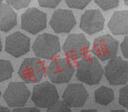U.S. Develops Ordered Graphene Crystal Growth Technology to Improve Manufacturing Efficiency
There are some draft products here, which will not be displayed on the website. These products can be modified later to enrich the content of the website. If you want to know more about our company, you can go to our website to check, there will be what you want, or you can consult us. Nice to meet you and looking forward to our cooperation. Draft-waiting For Releasing,Draft-waiting For Releasing,Draft-waiting For Releasing ETOP WIREHARNESS LIMITED , https://www.etopwireharness.com Researchers at Purdue University in the United States have developed a manufacturing method that can improve the graphene single crystal array, enabling it to achieve similarities and quality to silicon crystal production.
Researchers at Purdue University in the United States have developed a manufacturing method that can improve the graphene single crystal array, enabling it to achieve similarities and quality to silicon crystal production.
“Graphene is not yet in place from the point of view of the high quality and quality of silicon crystals, but the progress of this research can be said to be a very important step along the road to this direction.†Purdue University Nanoscience and Assistant Professor of Physics Yong P. Chen said.
It is said that this is the first time Purdue University has demonstrated how to make a regular pattern for the manufacture of commercial electronic components and integrated circuits.
The researchers used chemical vapor deposition to grow hexagonal single crystals from graphene "seeds" on copper foil in a methane-containing gas chamber.
"Using these seeds, we can make it produce thousands of very regular single-crystal arrays of graphene," Qingkai Yu said. Qingkai Yu was the first to use this research method when he was a research fellow at the University of Houston. He is now one of the correspondents of this research project and an assistant professor at the Ingram School of Engineering at Texas State University.
"We hope that the industry can take notice of these new discoveries and consider using ordered arrays as a possible method of manufacturing electronic components."
Graphene is currently fabricated on polycrystalline sheets, but this polycrystalline sheet is made up of randomly placed, irregularly shaped "dies." Conversely, using a more regular ordered array can make each crystal's position more predictable.
The arrays allow researchers to precisely locate electronic components in each die. Eric Stach, a researcher at Brookhaven National Laboratory in the United States, said that he was a professor of materials engineering at Purdue University.
This new study confirms the theory that when one grain touches another, the electron flow will be blocked. This problem can be eliminated with single crystal grain arrays.
The researchers said that they were able to control the growth of this ordered array. At the same time, this also demonstrated for the first time the electronic properties of the individual grain boundaries. They found that the edges of the single hexagonal grains in the graphene atom lattice are well-defined. Parallel direction, so you can further find the direction of each crystal.
The researchers used transmission electron microscopy and scanning tunneling microscopy to determine the orientation of the graphene lattice and measured the electronic properties at the grain boundaries using microelectrodes connected to two adjacent grains.
The results of the investigation also use Raman spectroscopy to show that there is a high electrical resistance in the grain boundary. It is also shown that due to the scattering properties of electrons, their electrical conductivity is hindered by the boundary.